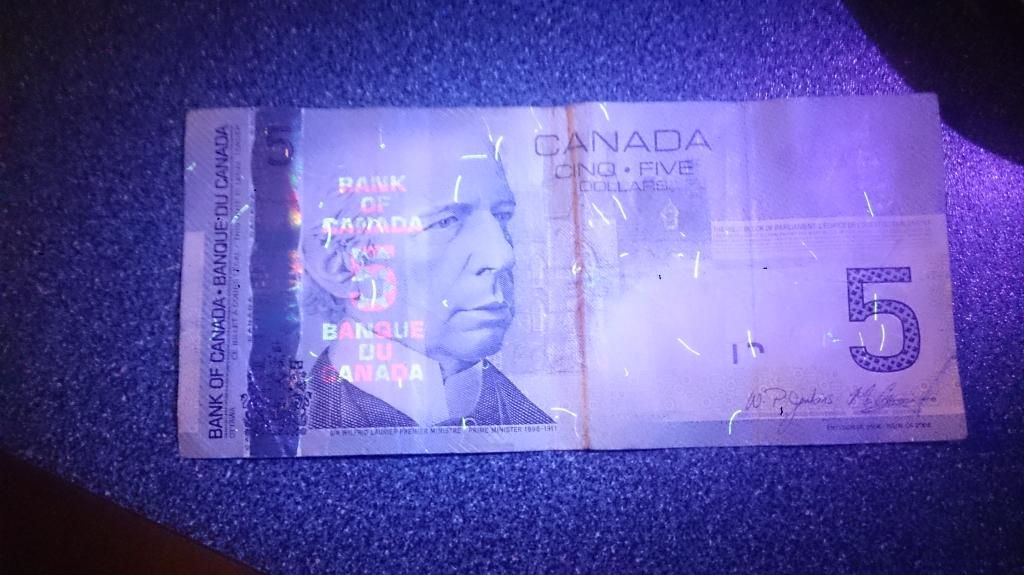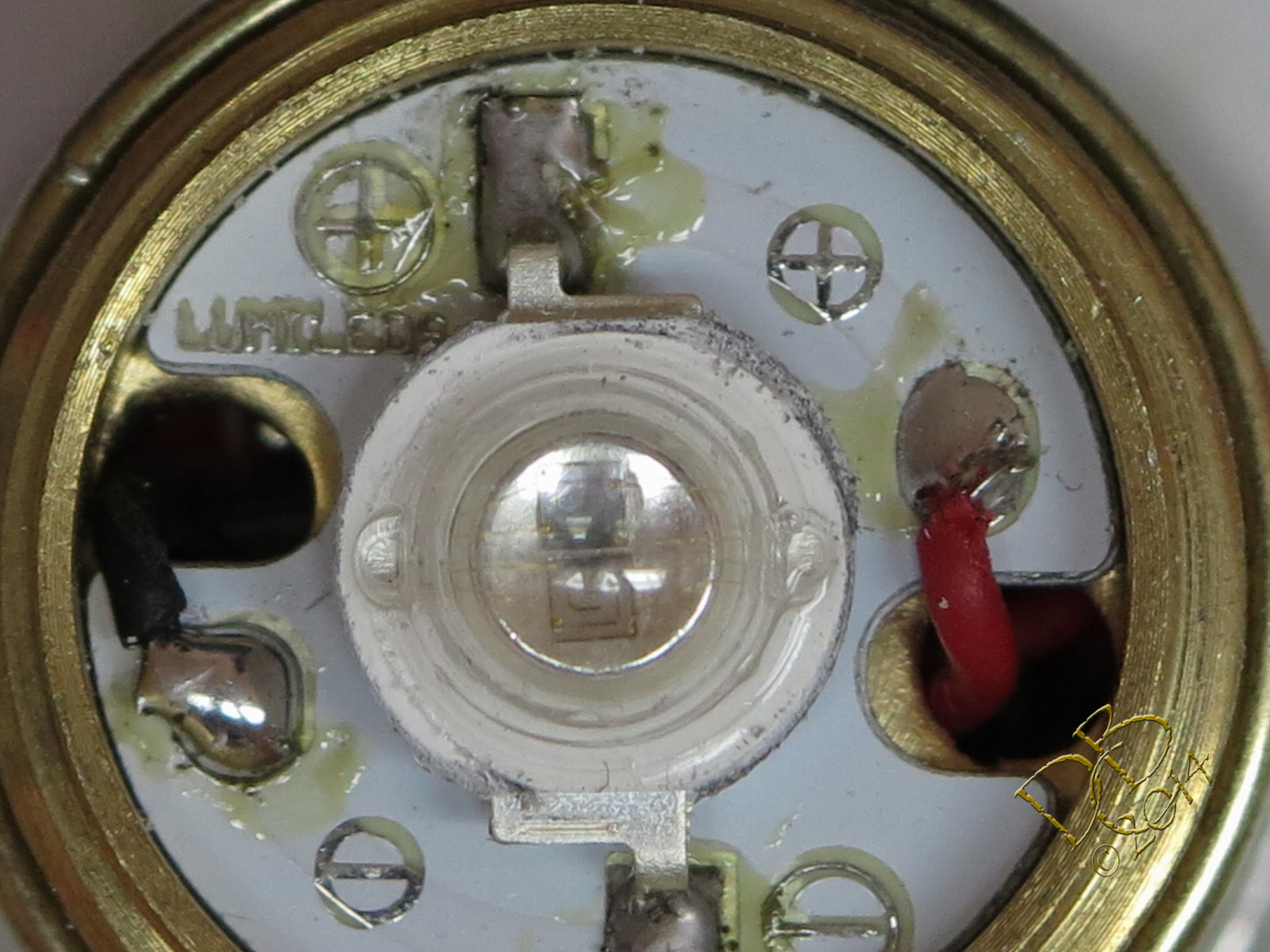This is a test of the newest 3535-size 365nm UV-led sold by intl-outdoor on a 16mm Noctigon XP-board. It is a chinese led made by ShenZhen Royalighting Technology co.,Ltd. The led is not sold for cheap ($16.28 shipped) so you will expect some performance :-) . Let's test that! To make this test directly an unfair exercise, I will compare it to the high performance Ledengin LZ1 365nm led that costs two and a half times that price at the moment  .
.
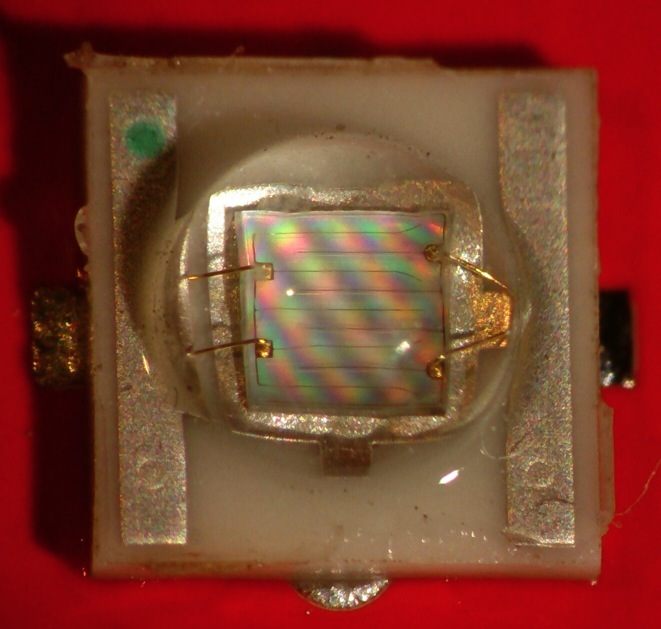
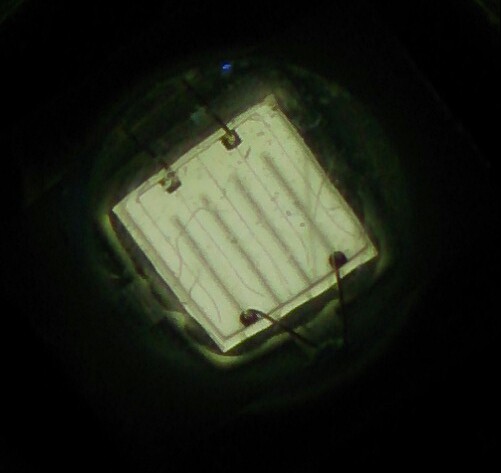
As you can see the whole led build looks a bit messy, far from how neat the average Cree led looks, or that Ledengin led. On top of that, the led dome was dirty upon arrival. When fired up, apart from the UV, there's a white/greenish glow of visible light. The Ledengin LZ1 365nm led also emits some white light, but a bit less than the RY-3535P.
Here is some data from the spec-sheet (thanks to DCBstm who send it to me, he had asked Hank for it :-) ) . So at 350 mA it should output 120 something, I make that mW. Sorry for the low quality graph, it was better in the pdf, but you can still see that the 350mA should be reached at very close to 4.0V.
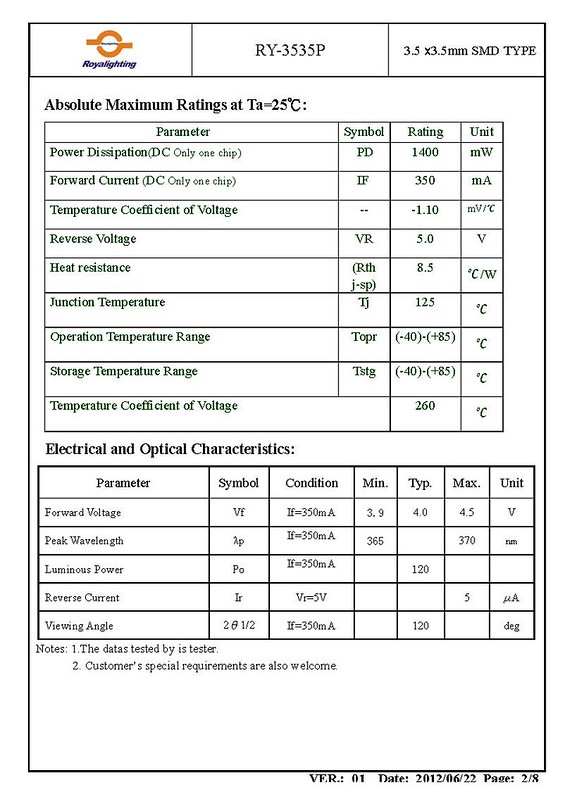

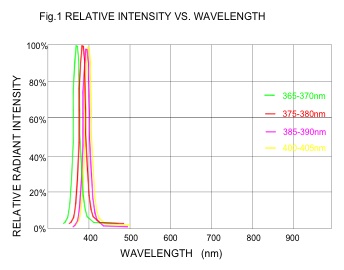
The tests.
Of course I could not measure the output in my integrating sphere because the luxmeter does not see 365nm light. UV-light is measured in radiometric power, so in watts, and I do not have a light power meter. So to turn a luxmeter into an improvised 'radiometric power meter', I used this set-up:
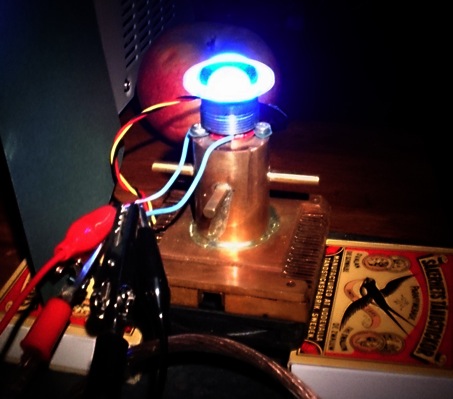
The ledboard was mounted on my cooled copper ledboard-mount, a reflector was placed on top of the led, a piece of plain copier paper was on top of that, and last a PMMA aspheric lens. The luxmeter was mounted at a fixed distance above the lens. Copier paper has a whitener added that converts a broad wavelength band of UV-light into visible blue. The luxmeter sees the fluorescent blue light, and the amount of fluorescence is a measure for the amount of emitted UV-light. The aspheric lens was added mainly to absorb remaining UV-light to prevent damage to my eyes during the test.
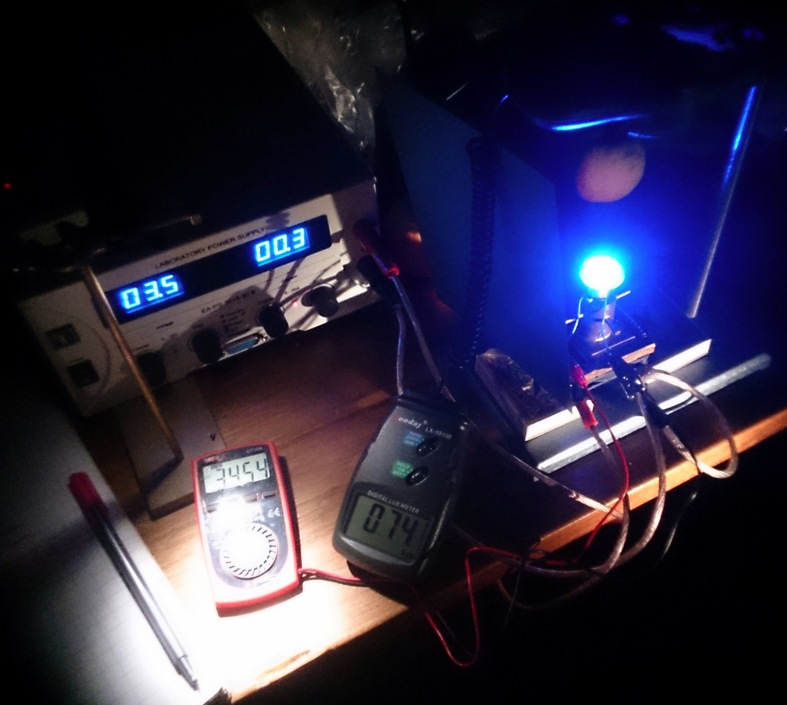
This set-up I think does provide a descent measure of radiometric output, and the measurements relative to each other should be accurate, but the numbers are of course in no way calibrated to real milliwatts yet. So to get a rough idea of how the measured numbers relate to milliwatts, I measured my Ledengin LZ1 365nm zoomie using the same setup: I removed the lens of the zoomie, mounted a reflector on the led with tape, put, as with the RY-3535P test, the piece of copier paper on top, with the PMMA lens, and measured the output with the luxmeter at the same distance as with the SY-3535P led-test. The flashlight runs the LZ1 at 1A, so the output should be about 1000mW of radiated power. In the test-graph below I plotted the output of the RY-3535P as a percentage of the output of the Ledengin LZ1 running at 1A, so you could read it as a percentage of 1000mW. Do not expect this kind of calibration being anything near accurate, but as a rough estimate I think it is not wildly bad :-)

Here is the output graph:
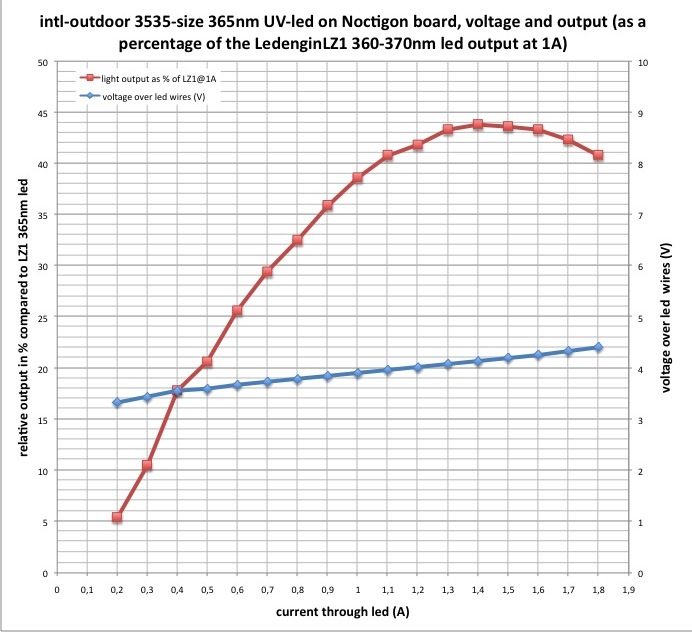
That differs a lot from the spec-sheet, at 4V I should expect 350mA current, but this led does 1.1A. What measures about correct according to the specs is the output power at 350mA: if you see 100% as 1000mW (see the considerations about that above) it is about 130mW, the number in the specsheet is 120mW. But this led on a Noctigon goes way higher than 350 mA :-) .
For inside a flashlight I would run this led at 0.9-1A, that is more than 80% of the maximum output. On a li-ion with a lineair NANJG-type driver with 3x7135 chips this led will have a great output (about 350mW OTF ?). However, no longterm run-tests have been done by me so don't blame me if the led fails at some point.
Small mod.
I had a small 16340 EDC flashlight leftover with a 2x7135 NANJG-driver in it (so 700mA), I soldered this led in and got a nice 5%-25%-100% UV-light :-) .
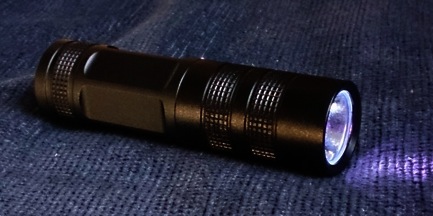
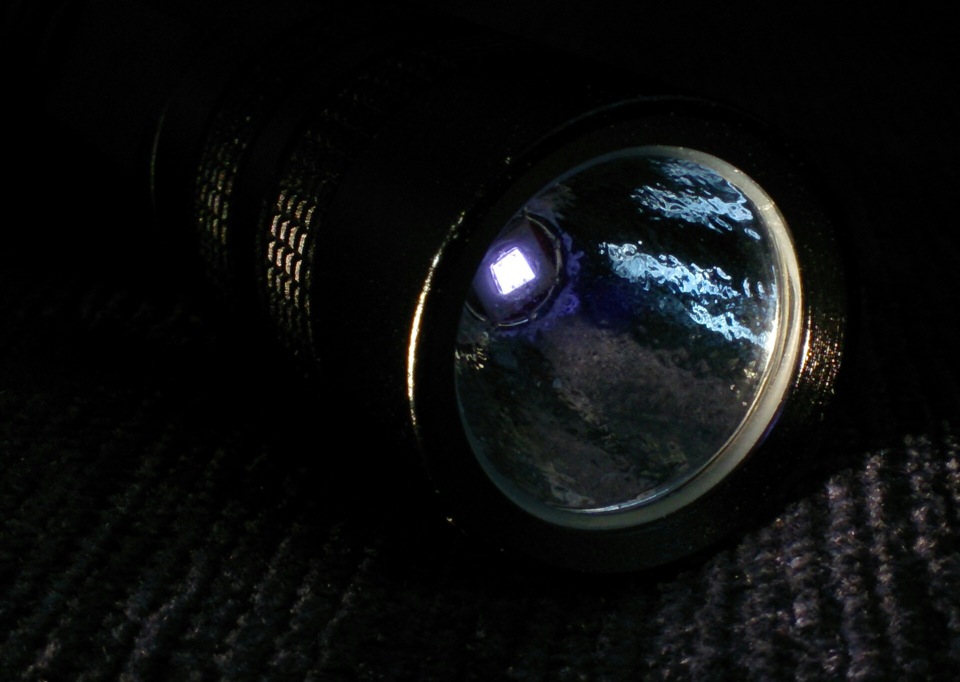
Here's a comparison with the LedenginLZ1-zoomie (at 1A, it should have more than 3 times as much output), picturing my hobby-mess  . Mouse over for the LZ1-zoomie at zoom out:
. Mouse over for the LZ1-zoomie at zoom out:
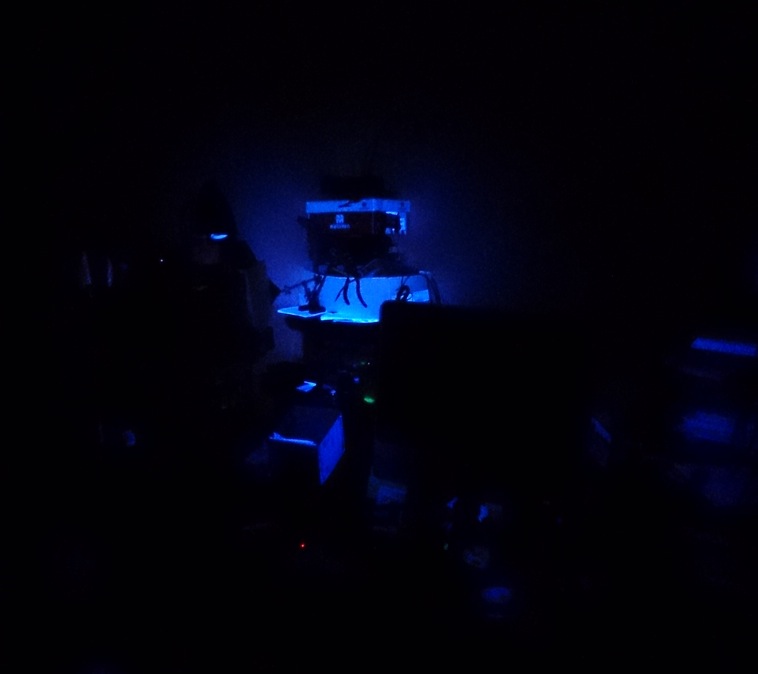
The zoomie zoomed in is no comparison, it is a lot brighter than this new mod.
Here's a close-up of a 5 euro bill, with green, blue and red fluorescent fibers, mouse over for the LedenginLZ1. The red fibers only show up in red if the wavelength is close to 365nm, at 380nm they are not red. So indeed the RY-3535P emits at the right wavelength.
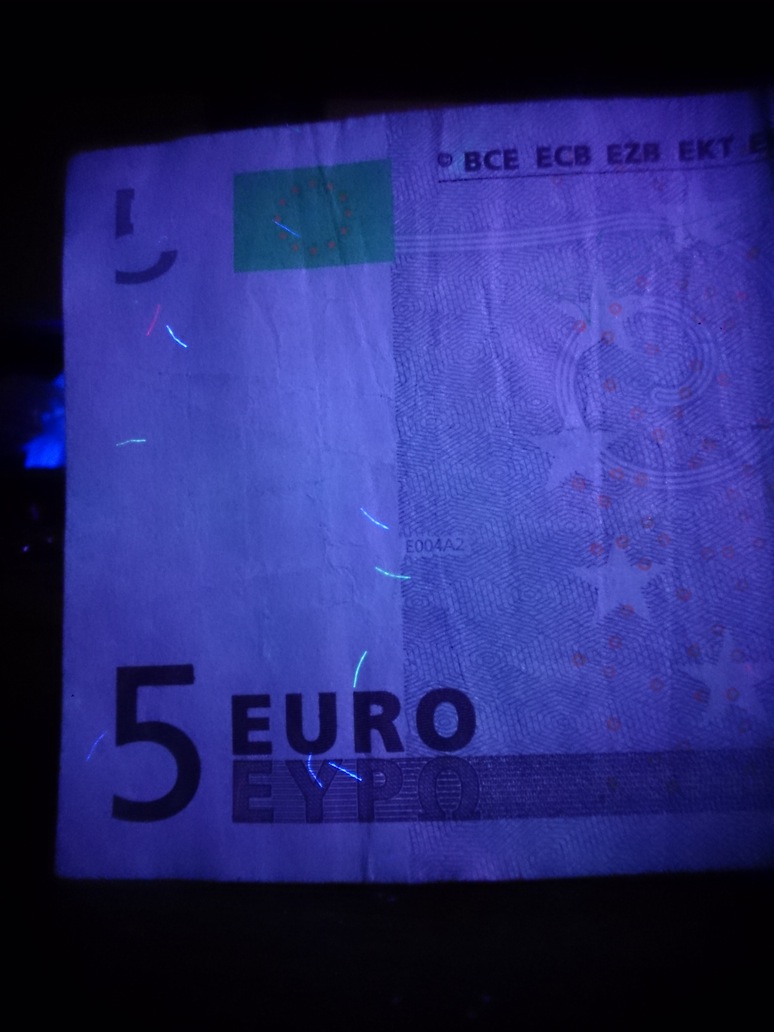
This is interesting. In real life the comparison shows that the RY-3535P led emits more visible light than the LZ1, (you do not want visible light because it masks the UV-effect) I wanted to show that in the picture. But after taking the above picture, much more striking than that is a purple near 400nm haze (our eyes do not see that, most cameras are more sensitive to near 400nm light than we). So the RY-3535P emits more light closer to 400nm (at the side of the emission spectrum) than the LZ1 does.
Bonus test.
Because of the different type of illumination that the two leds give that are both supposed to emit 365nm, and of course just because I can (that is what hobby is about after all :bigsmile: ) I had a go at measuring an output spectrum for both leds. I used my ancient Zeiss monochromator for that.
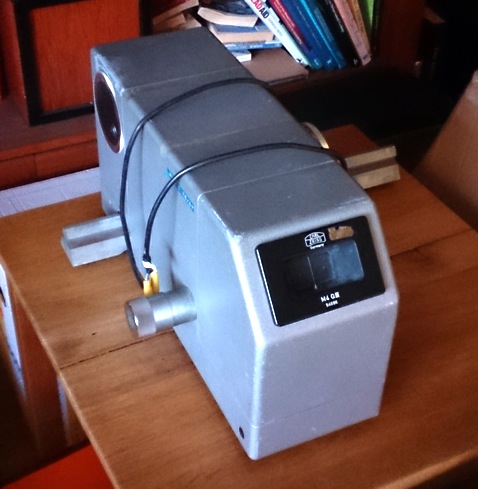
I aligned the flashlights well, pointing to to entrance hole and I did the same trick as before: I taped a bit of copier paper over the exit hole of the monochromator and placed a luxmeter right against it. I used a slit of 0.3, this transmitted enough light through the monochromator to be measurable, and still provided a good defenition of the output spectrum. My monochromator is a few nm off, so I corrected the data for that by calibrating the monochromator's transmitted wavelength reading with a 405nm laser. This way my wavelength accuracy should be within 2, probably 1 nm.
The assumption is here by the way that a 350nm photon causes the same copier paper fluorescence as a 400nm photon.
The absolute output values that come out of these measurements have no value, I corrected the two output-spectra to each other, so that the surface area under the graph was roughly the same (thus in the graph they are 'given' the same output power, to show the respective wavelength distributions best, does this make sense to anyone?).
Here are the measured output spectra:
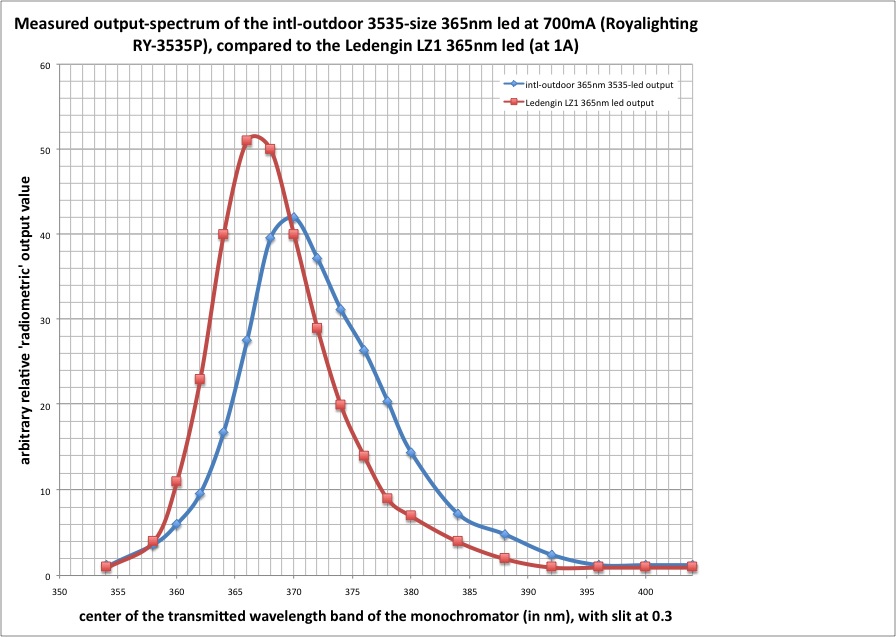
Well, that shows some difference in quality of the two leds. The LZ1 has a narrower peak at about 367nm, while the RY-3535P has a bit wider peak at almost exactly 370nm. And that is only just within specs. And the RY-3535P has indeed more output at the flanks towards 400nm.
That was a fun test :-)
Conclusion.
I think this is a great led for a good price. It does not compare favorably to the much more expensive Ledengin LZ1, but it performs very well on its own I think, with the added convenience of a standard XP-G footprint. I do not own one of the Kaidomain 365nm drop-ins, but my guess is that this led outperforms it clearly. Others will soon test that, I'm sure :-)
Thanks for reading!
